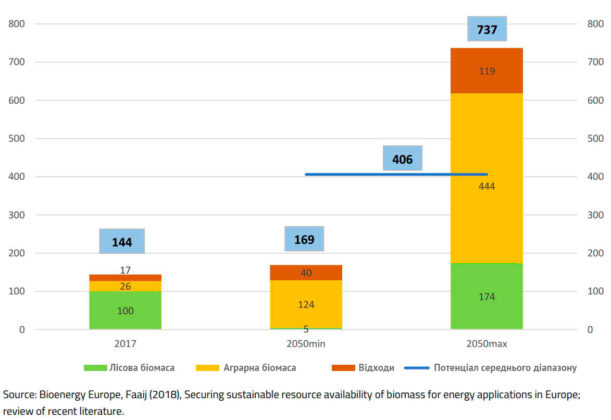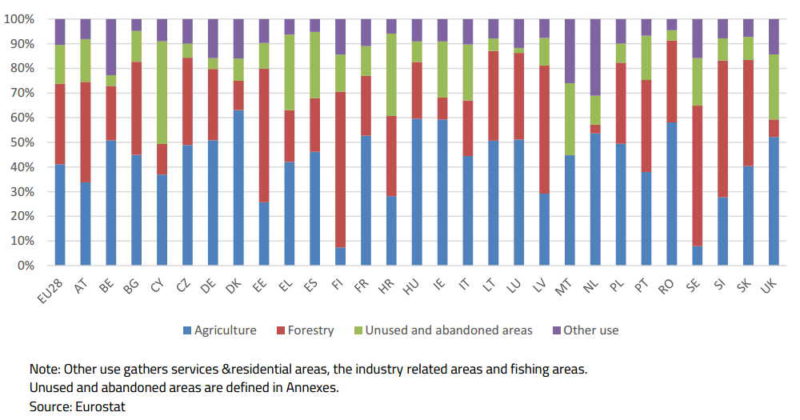Statistical report of Bioenergy Europe on Biomass Supply gives an overview on biomass potential in EU28 from such sources like agricultural land and by-products, forestry and waste.
Biomass is a renewable energy source, as it presents any organic matter from plants or animals. Biomass for energy can be in solid, liquid or gaseous form including or not fuel processing steps. Various sources of biomass are the following:
- Forests, such as firewood or logging residues.
- By-products of the wood industry (e.g. bark, saw dust, shavings, black liquor).
- Energy crops (e.g. arable crops: cereal or oil based; perennial lignocellulosic crops: woody and grassy).
- Agricultural by-products (e.g. straw, manure, orchards pruning, pruning).
- Biomass from waste streams (e.g. municipal waste, animal by-products).
- By-products from agro-food industry.
- Aquatic biomass (algae).
Existing studies have calculated the domestically available potential for biomass for energy to be between 169 and 737 Mtoe each year in Europe from 2050 onwards (see figure 1). A literature review concludes that the middle range potential of 406 Mtoe, which is around 24% of the total energy consumption in EU -28 in 2017, can be achieved by 2050 – considering different constraints (e.g. costs). This means that, compared to the actual 144 Mtoe used in 2017, the potential gives enough room to almost triple the amount of bioenergy in the EU-28 energy mix.

Figure 1. Gross inland energy consumption of biomass in 2017 and potential in 2050 for the EU28 (in Mtoe)
15,8% of the total land use in the EU28 represent unused and abandoned areas, which could potentially be used to grow energy crops (see figure 2). Croatia, Greece, Spain or the United Kingdom present high percentages of unused and abandoned areas (>25%). Additionally, Cyprus and Malta also have high shares of unused and abandoned areas, but the absolute figure is rather small. In absolute terms the countries showing the biggest unused and abandoned area are Spain, Sweden, Italy, France and the United Kingdom. Regarding the forest area proportions within the total area, Finland, Sweden and Slovenia are the top three countries while, in absolute terms, the top 3 with the largest forest area are Sweden, Finland and France.

Figure 2. Land use by type in EU28 in 2015 (%)
Definition of Unused and Abandoned areas from the Report:
Unused areas. This class includes areas which are in natural / semi-natural state and no signs of any use are visible.
Abandoned areas. This class consists of abandoned areas with signs or structures of previous use of any kind. Areas belonging to the abandoned class are not in use and can’t anymore be used for the original purpose without major reparation/renovation work.
Download Statistical Report ‘Biomass Supply’ from the Bioenergy Europe website website
Reference: In Ukraine, the potential of abandoned agricultural land, which can potentially be used for growing energy crops, is about 3.5 million ha, according to assessments of experts of the Bioenergy Association of Ukraine.
Read more news from partners: Looking for Underutilized Lands to put to the Web-Based Platform. BIOPLAT-EU project